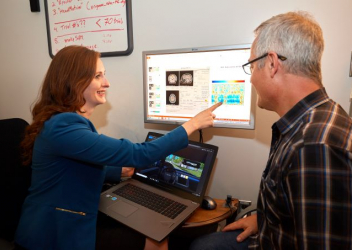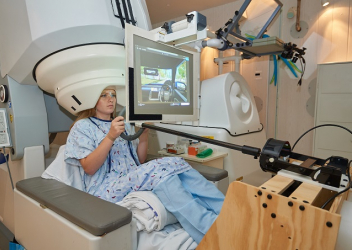Research In Action
Research In Action
Breadcrumb

I recently led a summary of research with colleagues from the Center for Injury Research and Prevention at CHOP and the Annenberg Public Policy Center at Penn that will help to inform future research and training in the area of executive function in adolescents and its impact on driving.
The overwhelming majority (75%) of serious teen driver crashes are due to "critical errors," with the three common errors accounting for nearly half of these crashes:
- lack of scanning that is needed to detect and respond to hazards
- going too fast for road conditions
- being distracted by something inside or outside of the vehicle
Making matters worse: The majority of newly licensed teen drivers exit the learner’s permit period with significant skill deficits, leading to a much higher risk of crashing compared with more experienced drivers. The most common types of crashes involve left turns, rear-end events, and running off the road.
While some of these errors may be due to a lack of driving experience, they may also be related to the ongoing development of the frontal lobe of the brain during adolescence.
The frontal lobe is associated with a set of higher-level cognitive processes called “executive functions” that give individuals the ability to make decisions, monitor and control their behavior and to manage complex tasks, such as driving. Three of these executive functions are crucial to safe driving:
- Working Memory – the ability to maintain and manipulate pieces of information in the moment and underlies the ability to multitask
- Inhibitory Control – the ability to filter and resist irrelevant or distracting information and to suppress impulsive behavior
- Set-Shifting – the ability to sustain or shift attention and responses with changing task demands or different rules in different settings
To find out which of these specific abilities are most important to safe driving as adolescents continue to mature, we conducted a review of previous studies that investigated executive function abilities and negative driving outcomes in adolescents. Here’s what we learned:
- Poor working memory and inhibitory control are related to negative driving outcomes in adolescent drivers but set-shifting is not.
- Adolescents with less working memory ability have more self-reported crashes and traffic citations, engage in more distracted driving, and show poorer hazard perception and detection and lane maintenance in simulated driving tasks.
- Adolescents with higher working memory capacity are more likely to take risks by running through red traffic lights. This may be due to confidence in their ability to manage complex tasks and scenarios (such as running a red light).
- Poor inhibition in adolescent drivers is sometimes associated with self-reported unsafe or risky driving behavior, as well as speeding and poor lane maintenance in simulated driving studies.
- Adolescent drivers may rely heavily on working memory and the ability to filter out distractions because the tasks of driving is still novel: For example, they have not yet learned how to comfortably handle the mechanics of driving, such as changing gears and checking mirrors.
Improve Driver Training
Given the key role that executive control plays in safe driving, there’s an urgent need for more research to inform effective training and interventions that deal specifically with limited executive function capacities in order to reduce related common driver errors, and ultimately crashes involving adolescents behind the wheel. Here are some evidence-informed ideas to consider:
- Driver education and simulated driver training could be used to train teen drivers with poorer working memory performance to drive under complex circumstances with multiple directions/goals, or while multitasking.
- Adolescents with limited ability to avoid distractions could be trained to drive with exposure to distractors, which are ever-present in everyday life.
- Advanced driver assistance system (ADAS) technologies could be used to provide alerts or to perform automatic functions that rely on working memory or attentive driving in order to avoid collisions, such as lane departure warnings for poor lane maintenance.
- Cell phone-blocking technology may be particularly helpful for adolescent drivers who find it hard to resist distraction.
Click here to read a blog post about another CIRP study about working memory development and crash risk.
Watch this video about working memory research at CIRP:






